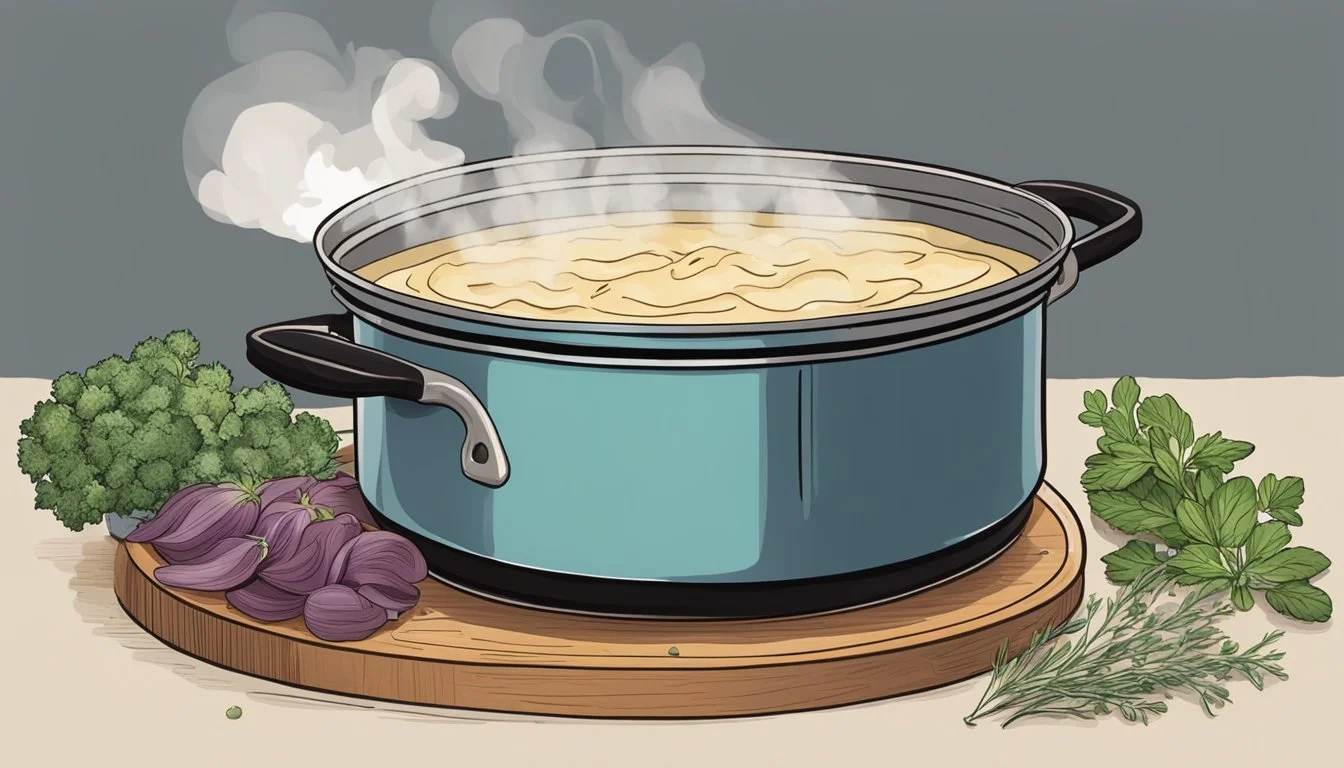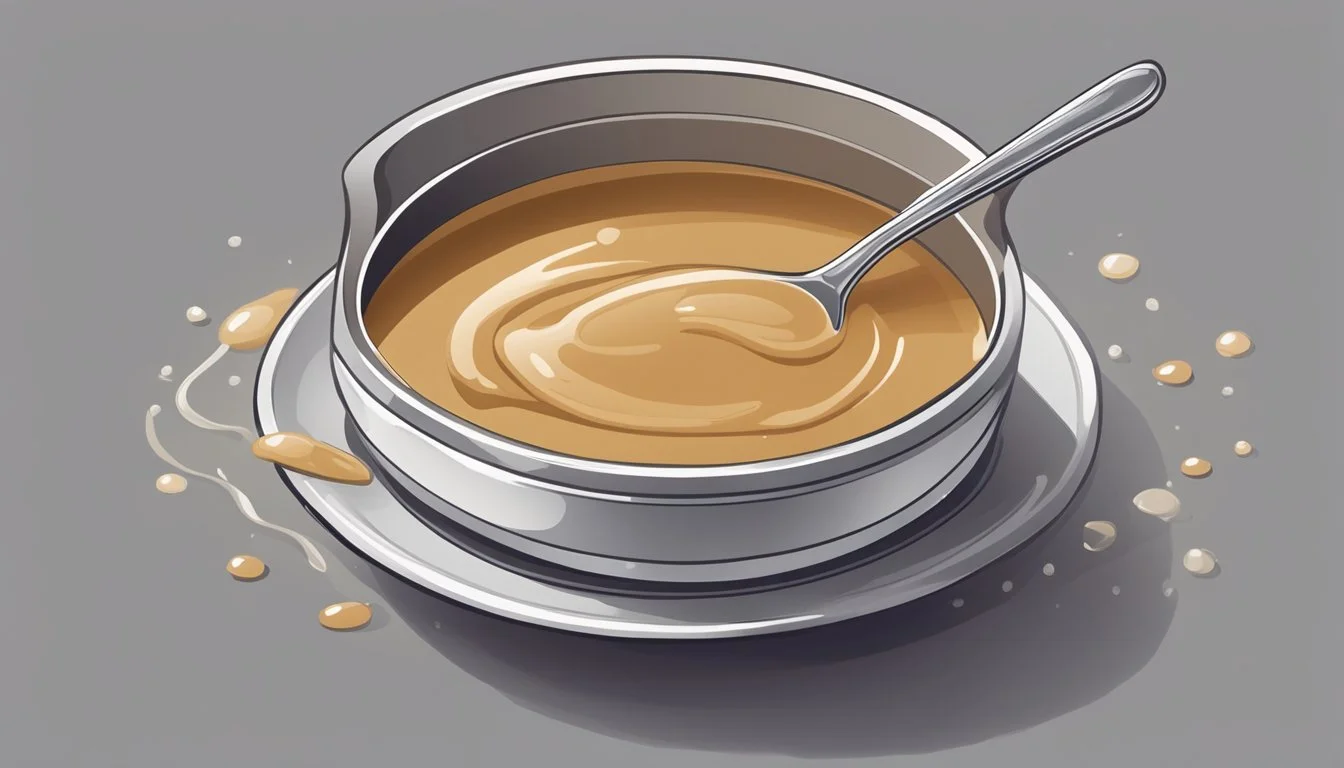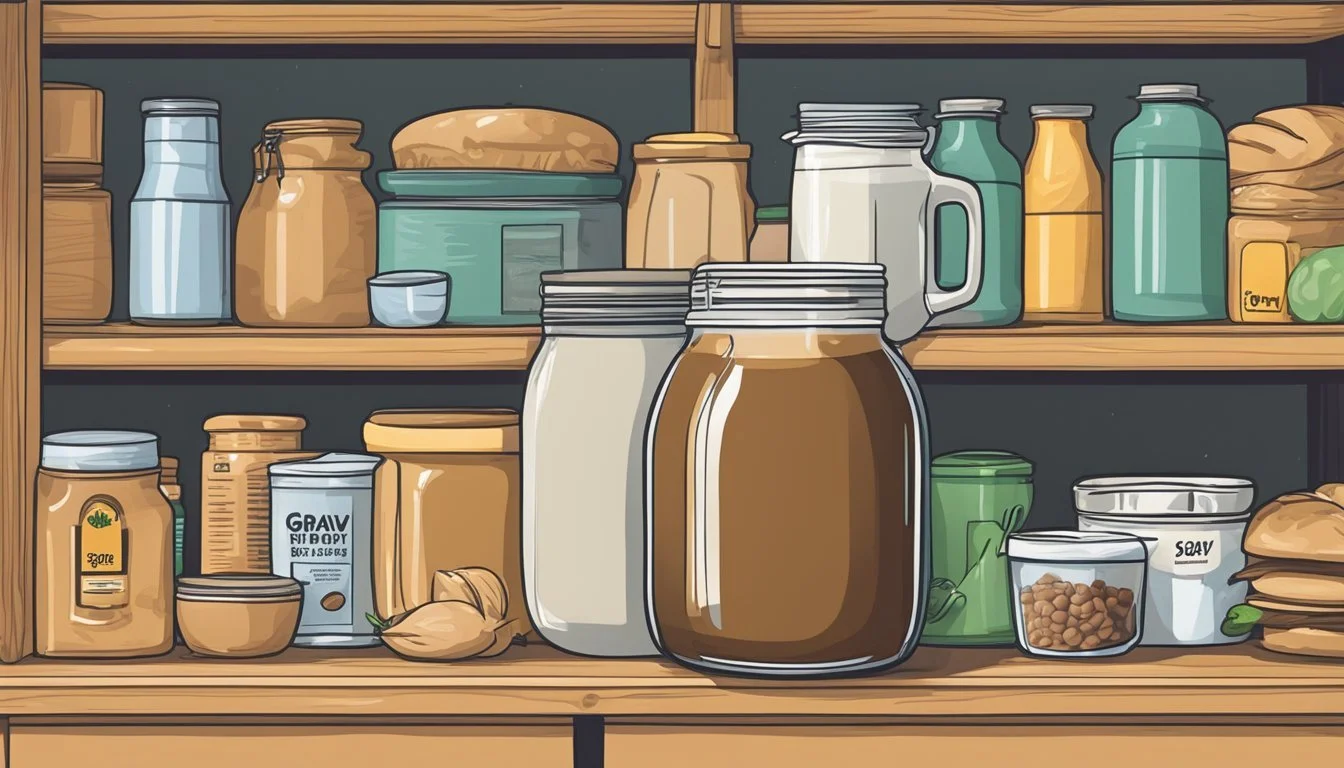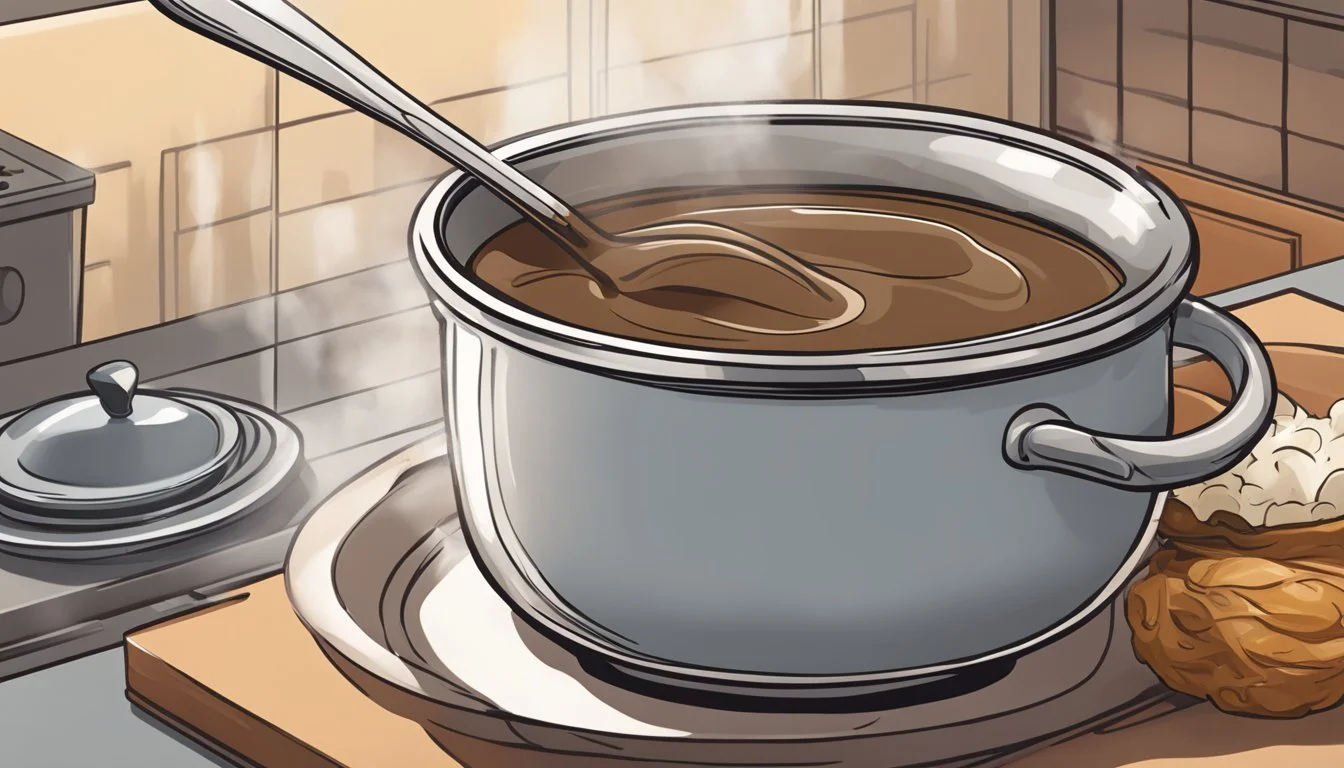How Long Does Gravy Last?
Shelf Life and Storage Tips
Gravy is an essential component of various dishes, serving as both a flavorful accompaniment and a moistening agent. Its shelf life is a topic of interest for those who want to ensure food safety while minimizing waste. When stored in the refrigerator, gravy's longevity depends on several factors, including the ingredients used and the way it is stored. Typically, meat-based gravy remains safe for consumption for three to four days, while gravy made with only vegetables may last slightly longer. Proper storage, such as using an airtight container, is crucial to prolonging its usability.
Freezer storage offers a solution for extending gravy's life beyond the refrigerator time frame. When properly frozen, gravy can remain of good quality for four to six months. However, it is important to note that while freezing can preserve the gravy's safety, it can affect its texture and flavor. Thawing and reheating should be done with care to maintain the quality of the gravy as much as possible. It is advisable to always check for signs of spoilage, such as an off smell or taste, before consuming leftover gravy, regardless of its storage time.
Composition of Gravy
Gravy is a sauce often derived from the juices of cooked meat and thickened with ingredients such as flour or cornstarch for a desirable consistency.
Ingredients
Gravy typically begins with meat drippings, which are the juices that cook out of meat during the roasting process. These drippings are rich in flavor and form the base of the gravy. To thicken this flavorful base and achieve the classic gravy texture, a thickening agent is used. The most common thickeners are:
Flour: a traditional ingredient for thickening gravy that contributes to its velvety texture.
Cornstarch: a gluten-free alternative that thickens gravy without the need for much cooking time.
The choice of thickening agent can influence both the texture and the flavor of the gravy.
Homemade Versus Canned
Homemade gravy is made from scratch using the pan drippings left after cooking meat. Its composition is simple and typically includes the aforementioned meat juices, a thickening agent like flour or cornstarch, and additional seasonings, resulting in a rich and natural flavor profile.
On the other hand, canned gravy is pre-made and often includes preservatives and added flavor enhancers. The ingredients list for canned gravy can be more complex, and the taste may differ from homemade due to variations in the quality and types of stock used, as well as differing levels of seasoning and thickening agents.
Storing Gravy
Proper storage is essential to extending the shelf life of gravy. Whether it's homemade or store-bought, gravy can be stored in both the refrigerator and the freezer when done correctly.
In the Refrigerator
Gravy should be kept in an airtight container to maintain its quality in the refrigerator. Homemade gravy typically lasts 3 to 4 days, while store-bought variants with preservatives might last 1 to 2 weeks. If the gravy includes ingredients like meat or dairy, it's best to consume it within 1 to 2 days to ensure safety and quality.
In the Freezer
When freezing gravy, it should be cooled down to room temperature before transferring to a freezer-safe container or freezer bag. To facilitate easy thawing, one may opt to freeze gravy in an ice cube tray before transferring the cubes into a bag. Labeling the container with the type of gravy and the date of freezing helps track its shelf life, which can be up to 4 to 6 months. Always leave some space at the top of the container to allow for expansion.
Shelf Life and Spoilage
The shelf life of gravy is influenced by its storage conditions and ingredients, while spoilage can be identified by changes in smell, texture, and the presence of mold.
Understanding Expiration Dates
Homemade Gravy: Typically lasts for 3-5 days when refrigerated in an airtight container.
Frozen Homemade Gravy: Can be stored for up to 6 months.
Store-Bought Gravy: Usually has added preservatives, extending its shelf life to 1-2 weeks in the refrigerator.
Unopened Dry Gravy Mix: Remains of optimal quality for about 2 years and can last 3-5 years past its "best by" date, noting a possible decrease in flavor over time.
Signs of Spoilage
One should look for the following signs to determine if gravy has gone bad:
Off Smell: A sour or unusual odor is a clear sign of spoilage.
Unusual Texture: Any signs of thickening, gelling, or separating fluids suggest degradation.
Mold: The presence of mold, which can appear as fuzzy or slimy spots, indicates bacterial growth and spoilage.
It is imperative to handle gravy properly, store it within safe temperature thresholds, and discard it if any signs of spoilage are observed to prevent foodborne illness.
Freezing and Thawing Gravy
When preserving leftover gravy, freezing provides an effective means of extending its shelf life. Proper techniques must be applied both during freezing and thawing to maintain the quality and safety of the gravy.
Freezing Process
Gravy can be successfully frozen and will retain its quality for three to four months. To freeze, one should:
Allow the gravy to cool to room temperature to prevent bacterial growth.
Pour the gravy into freezer-safe containers or bags, leaving some space at the top as it will expand when frozen.
Label the containers with the date of freezing.
It is imperative that the temperature of the freezer is at 0°F (-18°C) or below, ensuring quick freezing and thus better preservation of flavor and texture.
Thawing and Reheating Techniques
Thawing and reheating gravy correctly is crucial to avoid a decrease in quality. To properly thaw and reheat:
Thawing:
Place the frozen gravy in the refrigerator overnight for gradual defrosting.
Reheating:
Transfer the thawed gravy into a saucepan.
Reheat slowly over medium-low heat, while continuously whisking to prevent lumps.
If necessary, add water or stock to adjust the consistency.
For food safety, ensure the reheated gravy reaches an internal temperature of 165°F (74°C) before consumption.
Food Safety Practices
When handling and storing gravy, the priority is to prevent bacterial growth and ensure the gravy remains safe for consumption. Proper temperature control and cleanliness are vital.
Preventing Bacterial Growth
Temperature: To inhibit the growth of bacteria, gravy must be kept at a safe temperature. The USDA recommends that perishable foods like gravy be stored at or below 40°F (4°C). If the gravy has been left at room temperature for more than two hours, it should be discarded to prevent foodborne illness.
Refrigeration: Store gravy in the refrigerator within two hours of cooking to keep it safe.
Freezing: For longer storage, gravy can be frozen, ideally at 0°F (-18°C), where it can be kept safe for future use.
Safe Reuse of Gravy
When reusing gravy, warming it to the right temperature is essential for food safety.
Reheating: Always reheat gravy to a rolling boil, or to an internal temperature of 165°F (74°C) to eliminate any harmful bacteria.
Clean Utensils: Use clean utensils when serving or reusing gravy to prevent cross-contamination.
Labels: Proper labeling with the date and type of gravy when freezing can help track how long it’s been stored and prevent the use of old or unsafe gravy.
The storage times can vary, whether it's homemade or store-bought, and one should always consult the label for specific preservation instructions.
Nutritional and Culinary Aspects
Gravy serves as a versatile element in both nutrition and cuisine, with the capacity to enhance protein dishes and elevate flavors.
Gravy as a Protein Add-on
Gravy, traditionally a sauce made from the juices of meats that run naturally during cooking, is a hearty accompaniment that can contribute additional protein to a dish. When made with meat drippings, gravy includes small traces of protein from the source, which might be beef, poultry, or pork. Although gravy is not a significant source of protein on its own, it can complement protein-rich meals, increasing the overall protein content when drizzled over meat, tofu, or legumes.
Enhancing Gravy Flavor
To enhance the flavor of gravy, chefs often focus on the balance of seasonings and the base used to create the sauce. Salt is a crucial ingredient, providing depth and bringing out the innate flavors of the gravy. A basic gravy recipe might include:
Meat drippings
Flour (as a thickener)
Salt and pepper (for seasoning)
Cooks can also incorporate fresh herbs, garlic, or roasted onions to infuse the gravy with additional layers of flavor. When done correctly, the gravy complements the main dish without overpowering it, acting as a bridge that binds all the flavors on the plate together.
Seasonal Considerations
In the context of the holidays, food preservation takes on heightened significance due to the increase in cooking and leftovers.
Thanksgiving and the Holidays
During Thanksgiving and other holiday seasons, gravy is often made in larger quantities. It's important to know that gravy can be safely stored in the refrigerator for three to four days. Should there be an excess that cannot be consumed in this time frame, freezing is an option, which extends its shelf life to four to six months. This ensures that not only Thanksgiving leftovers but also gravy made during other festive times remain safe to consume later.
Refrigeration:
Meat-based gravy: 3-4 days
Vegetable-based gravy: 3-4 days
Freezing (in a freezer-safe container):
Meat and vegetable-based gravy: 4-6 months
Keeping track of storage times is particularly critical during the holidays, when normal routines may be disrupted by celebrations and large gatherings. It’s advisable to label the containers with the date and type of gravy to avoid confusion. Remember to allow gravy to cool to room temperature before refrigerating or freezing to maintain quality and safety.






